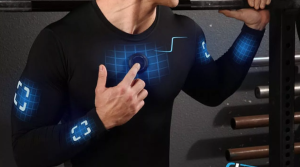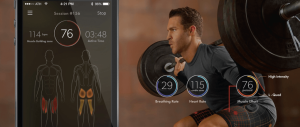
Introduction
The fitness world is changing fast. In 2025, new gadgets and wearables are reshaping how we work out. Gone are simple step counters and heart rate bands. Today’s devices track dozens of metrics. They coach us with AI, adapt to our needs, and even use augmented reality for guidance. Whether you run, lift weights, or practice yoga, smart tech can boost your results. In this guide, we explore the key fitness gadgets and wearables that will define workouts in 2025. You will learn what they do, how they help, and tips for choosing the right gear. Let’s unlock the future of fitness together.
What Are Fitness Gadgets and Wearables?
Fitness gadgets and wearables are devices you wear or use to track exercise and health data. They include smartwatches, rings, clothes, and even shoes with built-in sensors. These tools measure steps, heart rate, calories burned, sleep quality, and more. In 2025, they go further. They monitor hydration, muscle oxygen, and stress levels. They link to apps and cloud services for deep analysis. Wearables have moved from simple trackers to full coaching systems on your wrist or finger.
Evolution Since Early Trackers
Early fitness trackers counted only steps. Simple pedometers showed how far you walked. Then came heart rate monitors and GPS watches. Now, gadgets blend multiple sensors in sleek forms. Smart fabrics measure muscle activity. AR glasses overlay workout guidance. AI coaches in your earbuds offer real-time tips. Each new wave adds more data and better insights. The result is smarter, safer, and more motivating workouts.
Why Wearable Tech Matters for Workouts in 2025

Smart tech brings three big benefits. It personalizes training, boosts safety, and keeps you motivated. Data helps you see progress and avoid plateaus. AI insights tailor workouts to your fitness level. Real-time alerts warn of injury risks. Gamified challenges and social sharing spur you on. Wearables also connect to health apps and coaches. You can track long-term trends and make lasting gains. In 2025, fitness tech is not a luxury but a key part of any serious training plan.
Personalized Training Plans
No two bodies are the same. Top gadgets now analyze your past workouts, sleep, and stress to craft daily plans. If you feel tired, the system reduces intensity. When you recover well, it pushes you harder. This adaptive approach beats generic programs found online.
Injury Prevention and Recovery
Overuse injuries sideline many athletes. Wearables in 2025 monitor muscle strain and joint stress. They spot unusual movement patterns that signal risk. When you exceed safe thresholds, devices prompt rest or lighter sessions. During recovery, smart clothing applies gentle compression timed to healing cycles.
Motivation and Engagement
Ever lost steam mid-program? AI coaches send encouraging voice reminders. AR glasses guide you through form fixes. Social features let you compete with friends or global communities. These feedback loops keep you engaged and accountable over months and years.
Top Fitness Gadgets Shaping Workouts in 2025

Here are the most exciting tech tools that will power your fitness in 2025.
Smart Rings with Health Metrics
Rings now do more than track sleep. They measure heart rate variability, body temperature, blood oxygen, and even stress markers. With a form factor as small as a wedding band, they offer 24/7 monitoring. Apps use this data to predict the best workout windows and warn of fatigue.
Smart Fabrics and Compression Gear
Workout shirts and shorts weave in tiny sensors. They track muscle activation, sweat rate, and lactic acid buildup. Coaches use the data to refine technique and timing. Compression gear now adjusts pressure automatically based on muscle load, boosting circulation during and after exercise.
AI-Powered Headphones and Earbuds
Earbuds no longer just play tunes. They house motion sensors and voice assistants. They monitor breathing rate, vocal strain, and head motion for boxing or yoga. AI coaches speak to you mid-session, offering cues for pace, form, and breathing. Some models cancel background noise but let coach cues pass through clearly.
Advanced Smartwatches and Wristbands
Smartwatches remain a hub for fitness data. In 2025, they sport multi-wavelength heart rate sensors, ECG capabilities, and blood pressure monitoring. They also connect to glucose sensors for real-time energy level feedback. Touchscreens guide live workouts with video clips or AR overlays.
Biomechanical Footwear Sensors
Smart insoles and sensor-built shoes measure foot pressure, gait, and balance. They detect overpronation or poor landing form. Runners and basketball players get live vibration cues to tweak stride or jump mechanics. Data syncs to apps for weekly form reports and personalized drills.
Immersive AR and VR Fitness Systems
Set up a VR headset in your living room, and you can box against AI opponents or climb virtual mountains. AR glasses show route markers during trail runs and chart your form on a nearby wall. These immersive workouts distract from effort and boost enjoyment, turning routine exercise into adventure.
Key Metrics and Insights from Wearables

Smart gadgets track dozens of metrics. Here are the most valuable ones for shaping workouts.
Heart Rate and Variability
Resting heart rate shows general fitness levels. Heart rate during exercise gauges effort. Heart rate variability measures stress and recovery. High variability means you are well rested and ready to train hard.
VO2 Max and Oxygen Saturation
VO2 max reveals your aerobic capacity. Higher values mean better endurance. Blood oxygen levels show how well your lungs and blood deliver oxygen. Low oxygen can signal fatigue or altitude issues.
Power Output and Pace
For cyclists and rowers, power in watts measures actual force output. Runners get pace per mile or kilometer. These metrics help set precise training zones for speed or endurance work.
Movement and Form Analysis
Sensors in clothes and shoes track movement patterns. They measure joint angles, stride length, and foot strike. Identifying bad form early prevents injuries and improves efficiency.
Sleep and Recovery Scores
Sleep trackers break down light, deep, and REM sleep. They record disturbances and total rest time. Recovery scores blend sleep, heart rate, and training load to advise on rest or push days.
Calorie Burn and Nutrition Sync
Calorie estimates combine movement, heart rate, and personal data. Smart apps link to nutrition trackers and blood sugar sensors to recommend meals and snacks for optimal performance and recovery.
Tips for Choosing the Right Fitness Gadget

Not every device fits every athlete. Use these tips to pick gear that matches your needs.
Define Your Goals
Are you a runner seeking pace improvement? A strength athlete tracking power? A fitness newbie wanting general health data? Choose gadgets focused on your priority metrics.
Check Battery Life and Comfort
Devices must last through workouts and sleep. Rings need weeks of charge. Watches should run days. Clothing sensors should wash easily and feel soft.
Look for App Ecosystem and Integrations
A good gadget links with popular apps and training platforms. It should export data to coaching software or fitness communities. Open APIs offer more flexibility.
Consider Budget and Value
High-end wearables cost hundreds of dollars. Basic trackers start under fifty. Balance your budget with the metrics you truly need. Sometimes a simple heart rate monitor plus a free app fits best.
Read User Reviews and Expert Tests
Look for independent tests on accuracy and durability. User forums reveal real-world issues like sensor drift or app bugs. Choose proven brands with solid update records.
Table: Comparison of Top 2025 Fitness Wearables
| Device Type | Key Metrics | Battery Life | Price Range | Best For |
|---|---|---|---|---|
| Smart Ring (e.g. OxiRing Pro) | HRV, SpO₂, sleep stages | 7–14 days | $150–$250 | All-day and night tracking |
| Smart Fabric Compression Suit | Muscle activation, sweat | N/A (washable) | $200–$400 | Strength and recovery |
| AI Workout Earbuds (FitBeats) | Breathing, coaching cues | 8 hours | $100–$150 | Guided sessions |
| Multisensor Smartwatch (Pulse 6) | HR, ECG, BP, VO₂ max | 2–4 days | $300–$500 | Endurance athletes |
| Smart Insoles (RunSense) | Gait, pressure, balance | 10 hours | $120–$200 | Runners and jumpers |
| AR Fitness Glasses (VisionFit) | Form overlay, route maps | 5 hours | $400–$600 | Immersive cardio workouts |
Conclusion
Fitness gadgets and wearables in 2025 offer more power and precision than ever before. From smart rings and AI earbuds to AR glasses and biometric fabrics, today’s tech can guide every step, rep, and breath. By tracking heart rate variability, muscle activation, and sleep quality, these tools help you train smarter, prevent injury, and stay motivated. To benefit, start small with your key metrics, pick reliable devices, and blend data insights with how your body feels. As tech evolves toward implantables and holograms, the future of fitness promises even deeper connection between data and performance.
Call-to-Action
Ready to power up your workouts? Explore these cutting-edge fitness gadgets today and take your training to the next level!










